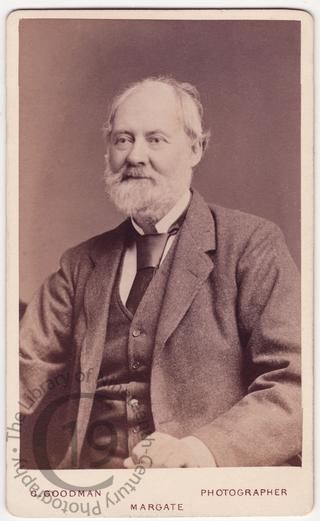
Charles Reade
A carte-de-visite portrait of the prolific English novelist and dramatist Charles Reade (1814-1884), best known for The Cloister and the Hearth.
Reade began his literary career as a dramatist. He made his name as a novelist in 1856, when he produced It Is Never Too Late to Mend, a novel written with the purpose of reforming abuses in prison discipline and the treatment of criminals. In 1861 Reade produced what would become his most famous work, The Cloister and the Hearth. The story relates the adventures of the father of Erasmus, a subject he had dealt with two years before in a short story in Once a Week. It became recognised as one of the most successful historical novels.
Reade sub-titled a number of his novels ‘A matter-of-fact romance’, a reference to his practice of basing his novels largely on newspaper cuttings, which he began collecting for this purpose in 1848. He also conducted his own research, observing prisons personally, for example, as well as borrowing at times heavily from other novelists' works. During his career, he was involved in several literary feuds involving accusations of plagiarism.
Reade's novels were popular, and he was among England's highest-paid novelists. However, many libraries refused to carry his works on the grounds that they were indecent. By the turn of the century he had fallen out of fashion.
Photographed by George Goodman of Margate in Kent.
Code: 124311




